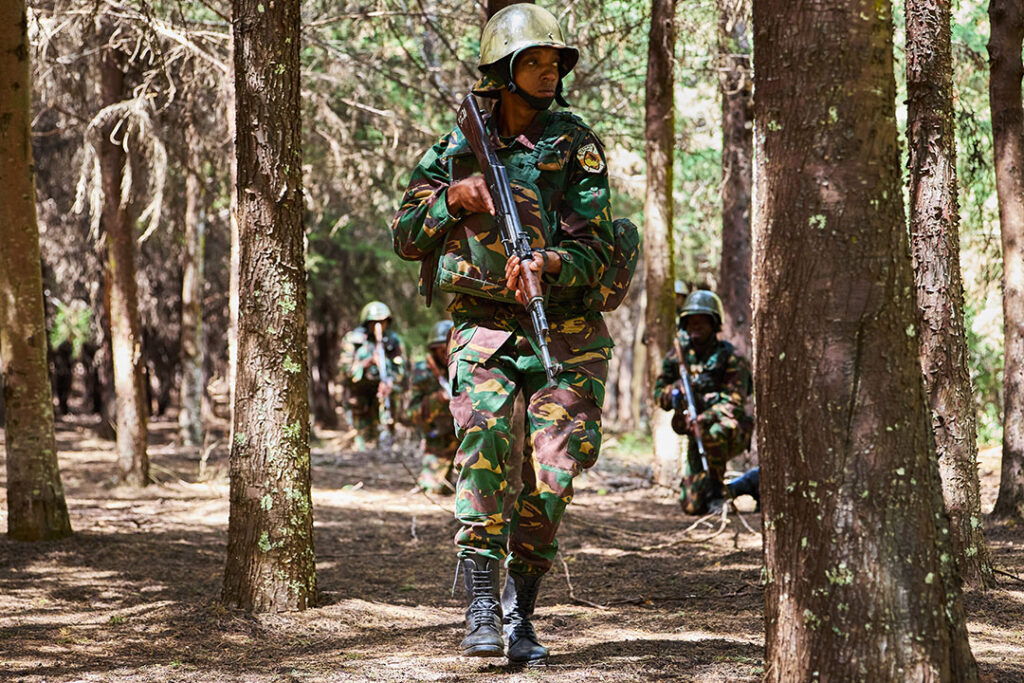ADF STAFF
As members of the Southern African Development Community Mission in Mozambique (SAMIM) begin to withdraw from the Cabo Delgado region, Tanzania is developing a strategy to protect itself from resurgent terrorism just over its southern border.
The Tanzania People’s Defence Force (TPDF) is part of SAMIM while also operating a separate 300-person mission in Cabo Delgado’s Nangade district, which lies inland from the region’s coastal hot spots of Palma and Mocímboa da Praia.
Nangade is separated from Tanzania by the shallow Rovuma River. Here, poverty and public resentment over a lack of economic opportunities create an environment in which extremists can recruit.
For the past two years, Nangade has been a focal point for SAMIM, which has largely put an end to cross-border attacks into Tanzania. However, extremist recruitment is ongoing, Gen. Jacob John Mkunda, Tanzania’s chief of defense forces, reported earlier this year.
“Terrorist networks have been recruiting our youth of age between 15 years and 35 years and transporting them to join terrorist groups in countries including DRC (Democratic Republic of the Congo), Mozambique and Somalia,” Mkunda told defense commanders in January.
SAMIM forces, together with Rwanda Defence Force troops and Mozambique’s own military, succeeded last year in eliminating an estimated 90% of Islamic State group-connected al-Sunna Wal Jammah (ASWJ) terrorists. The forces reduced the group from several thousand spread across northeast Mozambique to a few hundred holed up in the Catupa Forest.
Also known as Islamic State Mozambique, ASWJ terrorists have begun to make their presence felt again in recent months, emboldened by the planned July pullout of SAMIM troops. Botswana and Lesotho already have withdrawn their forces. Angola and Namibia are preparing to leave.
Extremists recently have pushed into areas that had been on the fringes of the fight with SAMIM.
In March, 300 terrorists occupied Quissanga, a district capital on the coast south of Mocímboa da Praia. While there, they beheaded three members of the security forces on nearby Quirimba Island. In May, 100 terrorists attacked the town of Macomia, forcing Mozambican troops to retreat and sending town residents fleeing. Fighters looted shops and food warehouses before withdrawing, according to the website Cabo Ligado, which tracks terrorism.
In response to the shifting conditions, South Africa, which deployed the bulk of SAMIM troops, has committed to staying in Mozambique until the end of the year. However, South African forces are underfunded and face shortages of crucial equipment such as helicopters. Rwanda, which pushed back a terrorist incursion into Nampula province, plans to boost its troop numbers to make up for the drop in SAMIM forces.
For its part, Tanzania intends to remain on the ground in Cabo Delgado as a hedge against further cross-border recruitment. Tanzanian authorities worry that Islamic State Mozambique’s recruits might return to launch terrorist attacks against Tanzania. As a result, the TDPF has begun a deradicalization campaign in Tanzania’s border communities to counter potential terrorist recruitment.
The TDPF’s mission in Nangade represents a strategy designed to confront terrorists before they can cross the river to cause mayhem in Tanzania.
“It is important to note that the border with Mozambique has historically been difficult to defend, and Tanzania has often had to position its battle-ready contingents nearby,” analyst Dastan Kweka wrote recently for The Chanzo.

